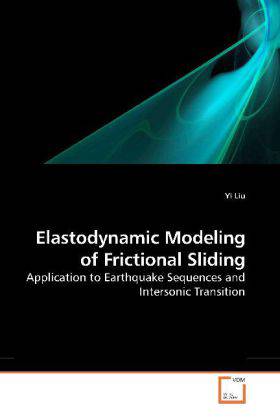
- Afhalen na 1 uur in een winkel met voorraad
- Gratis thuislevering in België vanaf € 30
- Ruim aanbod met 7 miljoen producten
- Afhalen na 1 uur in een winkel met voorraad
- Gratis thuislevering in België vanaf € 30
- Ruim aanbod met 7 miljoen producten
Zoeken
Elastodynamic Modeling of Frictional Sliding
Application to Earthquake Sequences and Intersonic Transition
Yi Liu
Paperback | Engels
€ 48,45
+ 96 punten
Omschrijving
Spontaneous slip on frictional interfaces involves both short-lived inertially-driven events and long- term quasi-static sliding. An example of considerable practical importance is the response of faults in the Earth''s crust to tectonic loading. The response combines earthquakes that cause destructive ground motions and aseismic slip. Numerical models are needed to study the physics of such complex behavior. This book contains two main contributions. The first one is the development and implementation of a 3D methodology for simulations of spontaneous long-term slip punctuated by rapid ruptures. Our approach is the first one to combine long-term deformation and the resulting stress redistribution on faults with full inclusion of inertial effects during earthquakes in 3D models. The second main contribution is the discovery of the potentially dominating effect of favorable heterogeneity on intersonic transition in earthquakes. The results emphasize that dynamic ruptures should be considered in the context of the entire fault slip history. The developed methodology can be applied to a number of problems in earthquake mechanics.
Specificaties
Betrokkenen
- Auteur(s):
- Uitgeverij:
Inhoud
- Aantal bladzijden:
- 200
- Taal:
- Engels
Eigenschappen
- Productcode (EAN):
- 9783639138306
- Uitvoering:
- Paperback
- Afmetingen:
- 220

Alleen bij Standaard Boekhandel
+ 96 punten op je klantenkaart van Standaard Boekhandel
Beoordelingen
We publiceren alleen reviews die voldoen aan de voorwaarden voor reviews. Bekijk onze voorwaarden voor reviews.








